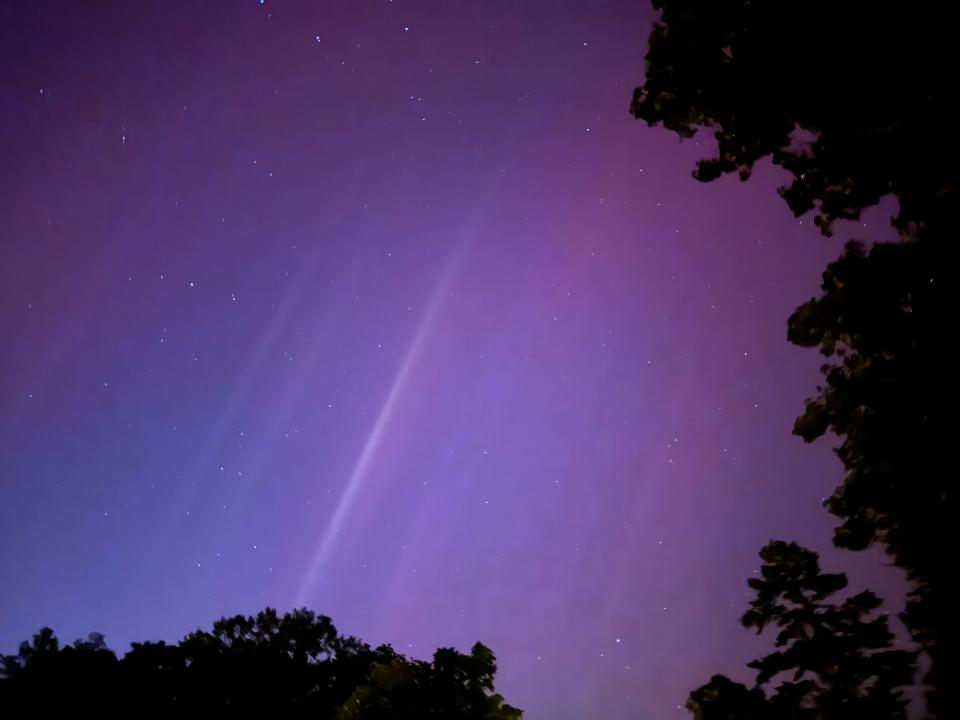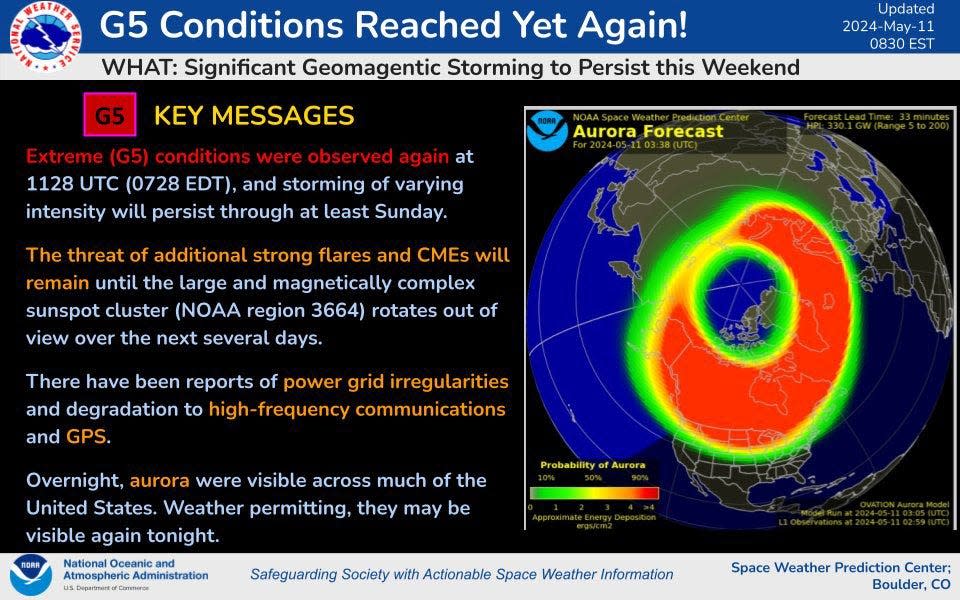Northern lights in Tallahassee: After devastating storms, aurora borealis stirs collective awe
Nature truly revealed its best and worst side on Friday.
Tallahasseeans awoke to panic as tornado warnings blared. Scenes of widespread destruction dominated social media news feeds throughout the day.
As night fell, horror gave way to awe as resident after resident shared their photos of the northern lights above Florida's capital city in the deep South.
Facebook was a stream of pink and purple with streaks in the night sky as residents went outside – often from powerless homes – to capture a clear view of a rare phenomena that is never seen in Tallahassee.
As reported by USA TODAY, the northern lights provided a rare sight for residents across the U.S. and around the world Friday night, with a powerful solar storm fueling a spectacle seen as far south as the Florida Keys.
Strong solar flares the sun has been emitting since Wednesday morning were responsible for the northern lights being visible across a wide swath of North America and Europe.
Seven coronal mass ejections began entering the Earth's outer atmosphere on Friday, said the National Oceanic and Atmospheric Administration. The agency issued a rare Severe (G4) Geomagnetic Storm Watch this week for the first time in 19 years, but announced Friday evening that extreme (G5) conditions reached Earth at 6:54 p.m. Eastern time. The last extreme event occurred with the "Halloween storms" in October 2003.
Because the sun is at the height of its 11-year-cycle, conditions were optimal for the auroras to put on a light show that electrified sky watchers, and appeared to far more Americans than usual.

"The same day of Tallahassee’s possibly worst weather days ends with the Aurora Borealis Northern Lights making an appearance," one commenter wrote. "Truly a remarkable day."
While aurora forecasts are notoriously fickle, experts from NOAA said the light show could be visible into Sunday.
The best aurora is usually within an hour or two of midnight (between 10:00 p.m. and 2:00 a.m. local time). These hours expand towards evening and morning as the level of geomagnetic activity increases, according to NOAA.
But the National Weather Service sounded a pessimistic note on the possibility. They said the geomagnetic storm may not be strong enough to be visible this far south.
"However, it should be noted the aurora did overperform yesterday," the agency wrote on Facebook.
"While the forecast might not be promising for us down south, the best chance to see the aurora will be to get to a light-pollution free sky (away from the cities). There will be some mid-level clouds tonight, but the coverage appears low across the area, especially east of Alabama. So for tonight, keep those expectations low, but hope for the best!"
If we do get lucky, Tallahassee Democrat photographer Alicia Devine offers this tip for those trying to catch a photographic memory of the celestial moment.

It is difficult to see it with the naked eye in Florida, though if your eyes get accustomed to the dark you may be able to see the telltale pink hue.
Shoot a photo of the sky with your phone in night mode, she says.
"The yellow icon in the top left of your phone needs to be yellow and flash off," she said. "When you take a pic you’ll have to hold the phone steady for three seconds for the shutter to fully complete the image."
JJ Hensley and Douglas Soule of USA TODAY contributed to this story.
This article originally appeared on Tallahassee Democrat: Florida northern lights lead to collective awe after day of tornadoes
